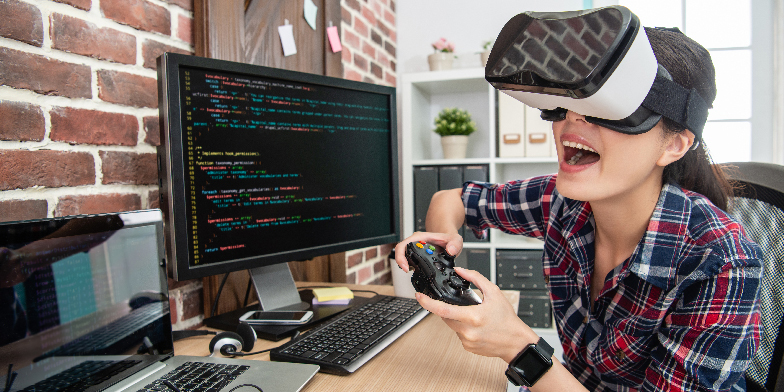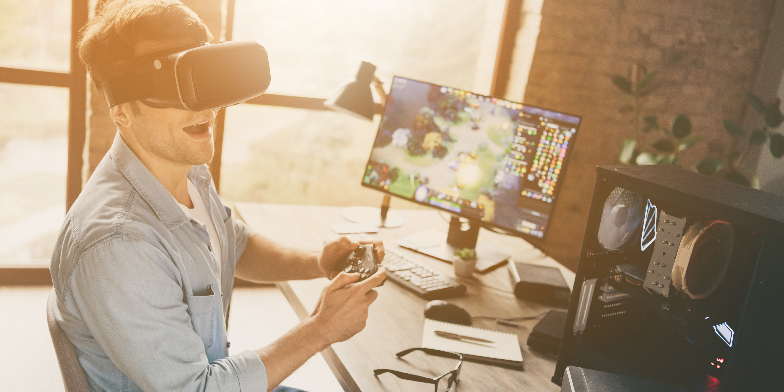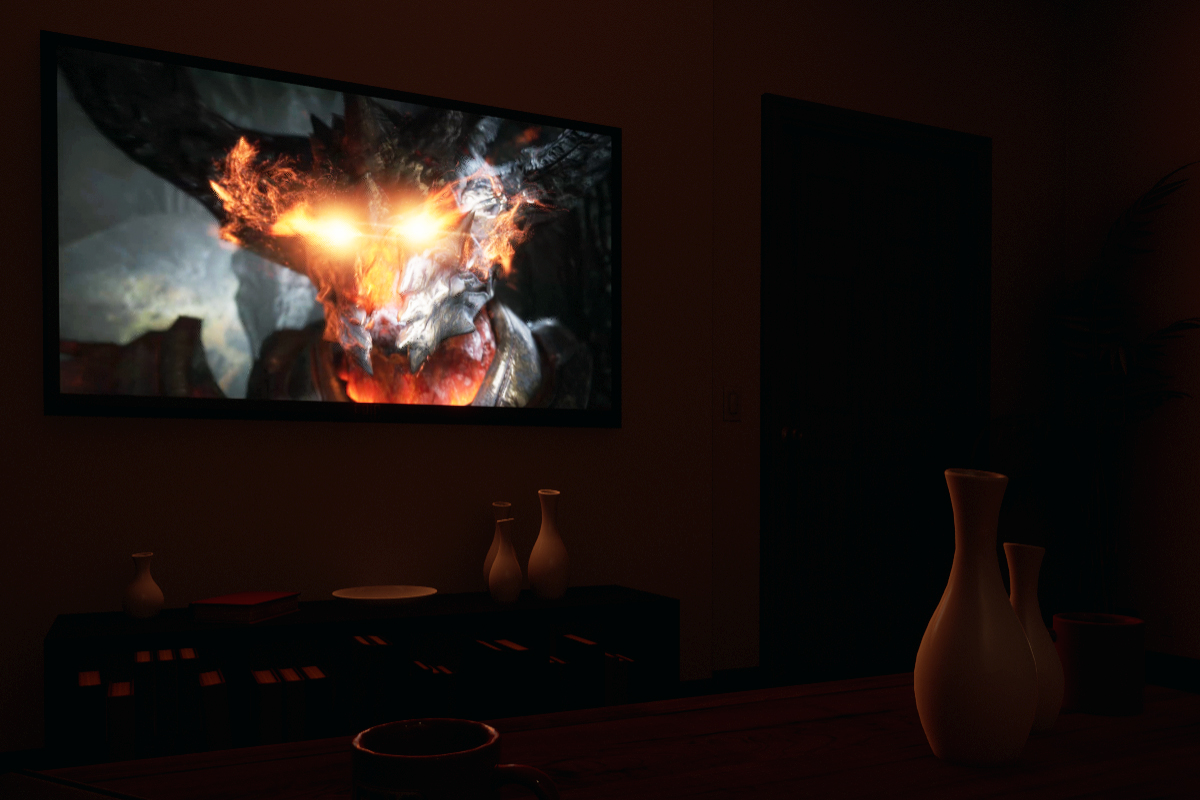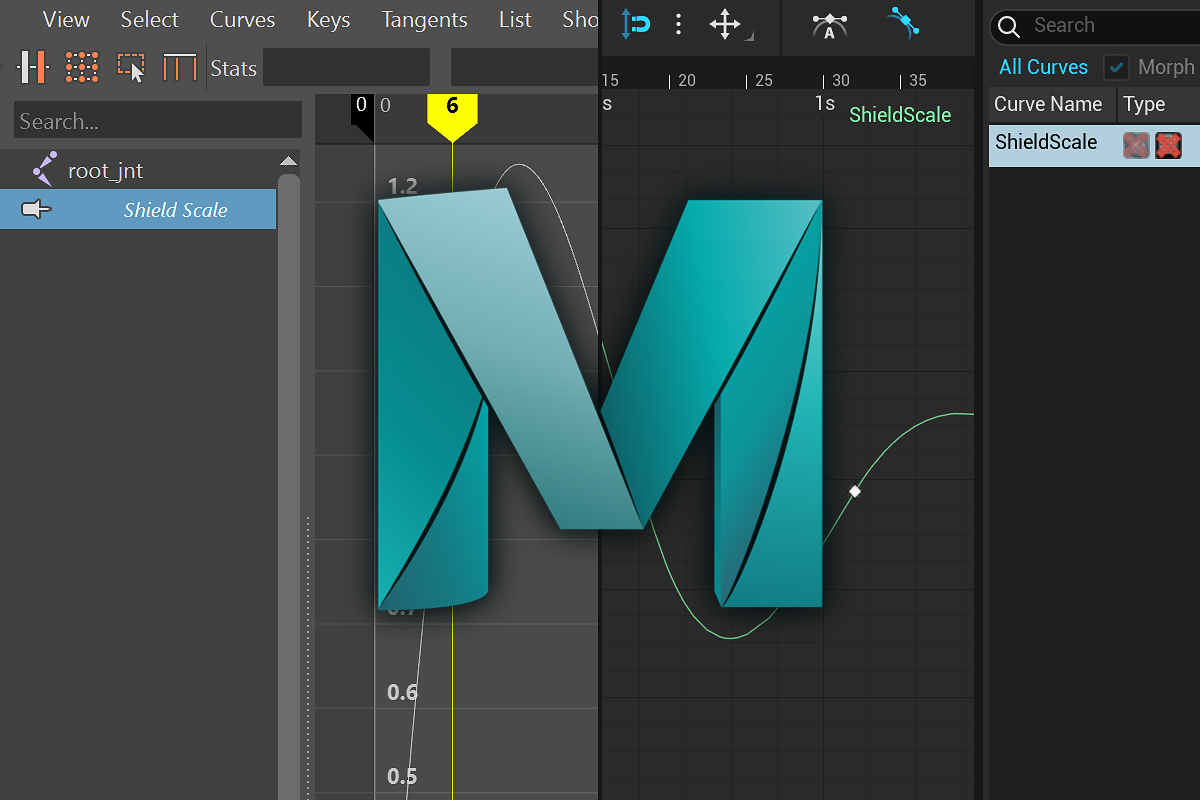
Although a push and pull between art and technology has existed for thousands of years (arguably since art began) the role of ‘technical artist’ is a relatively new one in both the video game and visual effects industries, only being acknowledged as a viable and respected career choice in the last twenty or so years.
Growing out of the need for more effective communication between the different fields that make up modern game and film production, the role of a technical artist can be hard to define as each team and project has different requirements.
The position of a technical artist on a team will often evolve organically around a specific set of needs. This has naturally led to a lot of open questions as to what a technical artist actually does on a production. If you’re intrigued by the overlap between art and technology, I hope I can answer a few of those today.
A Technical Artist is an important member of a production who forges that vital link between engineering and art teams. Working as a liaison/interpreter between these branches, the TA is responsible for finding creative solutions to technical challenges within their project’s art pipeline.
After reading this description, you may have noticed that unlike other jobs in similar industries that are well-defined and understood (3D Environment Artist, Animator, Art Director etc.), the definition of a technical artist is a little vague.
They solve technical challenges. Sure, but how? What does a Technical Artist actually do? Let’s dive a little deeper.
Table of Contents
Why do we need Technical Artists?
Technical Art is a somewhat unusual field in that it tends to develop naturally within a production team as it grows. As an example, let’s take a smaller team of three. In this team we have a systems programmer, a 2D artist, and an animator, and they’re all working on a simple 2D platform game project. They may not immediately identify the need for a dedicated technical artist role, but the seed is already there.
As their project expands, technical issues will crop up that do not fall under the purview of any one specific team member, but a crossover between two, or even all three. These problems tend to be real blockers as they require a working understanding of multiple disciplines to solve.
To continue with our example, let’s say the 2D platform project needs a playable character that can both run and jump based on player input. Both the Animator and the Programmer will need to collaborate closely to make a character controller. They’ll need to discuss what needs to happen from multiple angles, and work out the best way to control character locomotion based on its current state and the player’s input. They may run into trouble if neither of them is able to understand the needs of the other.
In another example, the 2D Artist and the Programmer will need to work out how the art is to be best implemented into the engine, and develop the tools required to do so effectively and within their performance budget. Compromises will need to be worked out, and sacrifices made.
This theoretical team might not realize it yet, but when they collaborate across their disciplines to solve technical problems, they’re taking on the role of a technical artist. Should the scope of the project and the size of the team grow, there will be more and more of a pressing need for a dedicated team member in this role – cooperating with each member of the team to solve technical problems and keep the project rolling along.

Why is it so difficult to define what a Technical Artist does?
As each team has its own dynamic and each project has its own unique needs, it can be hard to lock down exactly what a technical artist does. By definition the role is intended to fill gaps between multiple disciplines, and those gaps will change from studio to studio.
Some technical artists working in the industry have limited programming ability, and approach the role from an art or design perspective. I would know, because I’m one of them!
These people have a passion for creating amazing art, and use their knowledge of the tools/systems they’re working with to push the boundaries of the possible. They work collaboratively with their engineering team to find creative solutions to their project’s technical hurdles.
Other technical artists have strong computer science backgrounds, are intimately familiar with the underlying architecture of the engine or software they’re using. These people often spend their time developing invaluable tools for their art team to get the most out of their work.
Both of these examples are technical artists. As are myriad others out there who have found their unique niche within their production team to be the best support they can be.
With such a broad spectrum of definition and a healthy debate online over which of these is ‘correct’ (Spoiler warning: They’re all valid), it’s easy to see why people may be confused as to what a ‘Technical Artist’ actually is – even those already working in the industry!
Luckily there are a few things that all technical artists have in common which helps us narrow it down and get a useful working definition.
The bridge between worlds
The first commonality that all successful technical artists share is that they act as that vital bridge between the engineering and art sides of a production. Whether they approach interdisciplinary problems from one angle or another, they will have a strong understanding of both content production and the systems behind the engine/tools they use.
This doesn’t necessarily mean that a technical artist will have the same knowledge base and skillset as a programmer and a 3D artist (for example) combined. Rather, they need to be able to relate to each field, and have enough of an understanding to work together with their team to solve their project’s technical problems.
Naturally, each individual will bring a different subset of skills to the job. A good technical artist will have a broad range of knowledge that covers many different aspects of production, and will be able to use that knowledge to make sure their art team has the tools they need, and that they are supported.
Which brings us to the most important aspect of a technical artist’s role.
Communication is everything
While an in-depth knowledge of the visual arts, the tools their production uses, and the systems behind them are facets of a good technical artist, more than any other attribute or skill they may possess the ability to communicate clearly and effectively is the most important.
It goes without saying that to solve highly technical problems between individuals, teams, or even entire departments, a technical artist needs to be able to effectively communicate with people from a range of different backgrounds. This requires a creative problem-solving streak, a compassionate willingness to understand, and a lot of patience.
A technical artist often does their best work under pressure, where accurate communication is even more critical. Being able to tailor an explanation to the right audience is one of a technical artist’s most valuable skills. For example they’ll need to translate requests from the artists to the engineering team, and often come back to explain how and why a specific implementation of their idea isn’t going to work they way they expect, all the while making sure the art directors and producers above them are satisfied that positive progress is being made.
There is a lot of power in this position. Technical artists will often be directly responsible for making sure an entire team understands a situation, and has a lot of influence over the direction and level of cooperation they receive.
What qualities does a Technical Artist need to have?
This is a difficult section to write. As we’ve already covered, each technical artist will face their own unique challenges. Nonetheless, I have compiled a list of skills/attributes that I personally believe all good technical artists should exhibit.

Skills a Technical Artist will need:
- Strong communication skills
Keep in mind this not only includes an approachability and ability to effectively work with people from different backgrounds, but also very strong written communication skills as well. Technical documentation doesn’t write itself! - The ability to solve problems creatively
Whether working independently or with others, a good technical artist will be able to break down a difficult situation quickly and provide a range of solutions. If the solution requires a tool or script that doesn’t yet exist – they may need to make it themselves. - Be a Leader
A technical artist is expected to champion the problem solving process. They should rally their team, delegate tasks, and collaborate with people across their studio, usually under pressure. - An intimate understanding of the content-creation pipeline
It’s a technical artist’s job to know the production pipeline inside and out. While the nitty-gritty is usually unique to a specific studio (proprietary tools and bespoke internal practices are common) there is always a lot of overlap. Memorize that style guide! - A solid foundation in the programming languages your team uses
Technical artists don’t need to be highly-skilled programmers themselves, but they will need to be able to speak the language of a highly-skilled programmer. After all, they’ll be working with them closely. Familiarity with the high-level language(s) being used is often sufficient.
Skills a Technical Artist may need:
- A more in-depth knowledge base of various aspects of the content creation pipeline. (This may include 3D Art Production, Level Design, Visual Effects, Animation, and more.)
- Shader development experience
- An intimate knowledge of specific programming languages (Python in particular, but this will be specific to the team/project)
- A strong understanding of the visual arts (color theory, composition etc.)
- Technical animation skills (including the creation of character rigs and rigging tools)
- An understanding of game engine graphics/rendering paths, and how they might best be utilized in a variety of circumstances.
- To have their finger on the pulse of the industry, knowing what tools are available and how they might be applied to their team or project.




